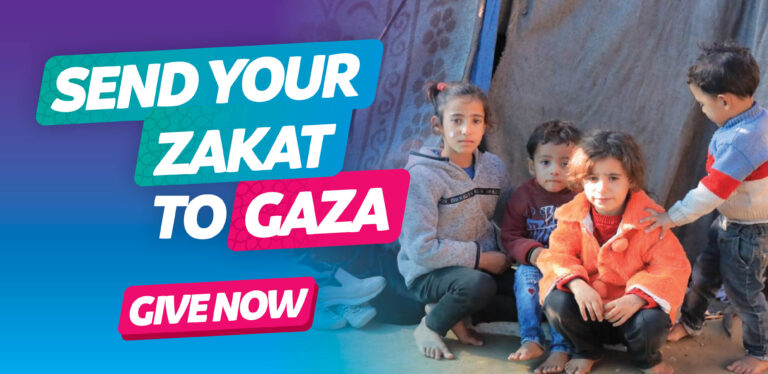Eid al-Adha, also known as the “Festival of Sacrifice,” is one of the most significant Islamic holidays observed by Muslims around the world. The holiday commemorates the willingness of Prophet Ibrahim (peace be upon him) to sacrifice his son Ismail (peace be upon him), as an act of obedience to God. However, before the sacrifice could be carried out, God provided a ram to be sacrificed instead.
This story, shared in the Abrahamic religions, is at the heart of Eid al-Adha’s traditions, especially the practice of animal sacrifice known as Qurbani. In commemoration of this act, Muslims around the world sacrifice certain animals during Eid al-Adha.
The Significance of Eid al-Adha
Eid al-Adha falls on the 10th day of Dhu al-Hijjah, the last month of the Islamic lunar calendar, and coincides with the Hajj pilgrimage, one of the Five Pillars of Islam. This period is a time of reflection, devotion, and a demonstration of faith. Muslims celebrate Eid al-Adha by engaging in prayer, sharing meals with family and friends, and most notably, performing the ritual of Qurbani.
Understanding Qurbani: The Act of Sacrifice
Qurbani comes from the Arabic word “Qurban,” meaning an offering or sacrifice made to God. The ritual involves the sacrifice of an animal, typically a goat, sheep, cow, or camel, which is carried out after the special Eid prayer. This practice is a symbolic act meant to demonstrate a Muslim’s willingness to part with something valuable in the way of God, emulating Prophet Ibrahim’s devotion.
The meat from the sacrificed animal is then divided into three parts:
1. One-third for the family: The immediate family of the person performing the Qurbani consumes a portion of the meat.
2. One-third for friends and neighbors: This part is distributed among friends, neighbors, and relatives to foster community bonds.
3. One-third for the needy and poor: The final portion is given to those in need, ensuring that everyone, regardless of their financial situation, can partake in the festivities.
Choice of Animal – What Do You Sacrifice on Eid al-Adha?
In the practice of Qurbani, the type of animal chosen is important. According to Islamic tradition, the animal should be in good health, without any defects or illnesses, and of a certain age.
Typically, a sheep or goat should be at least one year old, while a cow or camel should be at least two years old. The sacrifice of these animals is not just a ritualistic act but also carries deep symbolic meaning.
– Sheep and Goats: These are the most common animals sacrificed due to their availability and affordability. They symbolize purity, innocence, and the act of giving up something cherished.
– Cows: In many parts of the world, especially in South Asia and Africa, cows are sacrificed. They represent abundance and the community spirit, as a cow’s meat can feed a larger number of people.
– Camels: Although less common, camels are sacrificed in some regions, particularly in the Middle East. A camel symbolizes endurance and resilience, reflecting the perseverance of Prophet Ibrahim (peace be upon him)
The sacrifice of these animals is intended to be done with respect and compassion. The Prophet Muhammad SAW emphasized treating the animal with kindness, using a sharp knife to ensure a swift and humane end, and avoiding causing the animal any distress.
The Spiritual and Social Dimensions of Qurbani
Qurbani is not merely about the physical act of slaughtering an animal; it carries profound spiritual significance. It serves as a reminder of the values of sacrifice, obedience, and devotion. By giving up something valuable, Muslims reflect on the blessings they have and express gratitude to God.
Moreover, the act of Qurbani fosters a sense of community and social responsibility. Distributing the meat to the poor and needy ensures that even those who might struggle to afford meat can celebrate Eid al-Adha with joy. This practice underscores the Islamic principles of charity and compassion.
Modern Interpretations and Ethical Considerations
In today’s world, the practice of Qurbani has adapted to different contexts and circumstances. While traditional sacrifice remains prevalent, especially in Muslim-majority countries, there are modern interpretations and alternatives that some Muslims choose to follow, particularly in non-Muslim-majority countries where the practice may be challenging to perform.
Some Muslims opt to give monetary donations equivalent to the cost of a Qurbani animal to charitable organizations that perform the sacrifice on their behalf and distribute the meat to those in need. This approach not only simplifies the process but also ensures that the spirit of sacrifice and charity is upheld.
In recent years, there has also been increased awareness around the ethical treatment of animals. Many Muslims are more conscientious about ensuring that the animals used for Qurbani are raised humanely and slaughtered in accordance with Islamic guidelines that emphasize kindness and care.
Global Perspective on Qurbani
Eid al-Adha and the practice of Qurbani are observed worldwide, with cultural variations reflecting local traditions and customs. In some regions, large communal sacrifices are organized, where entire communities gather to perform Qurbani together, reinforcing social bonds.
In countries like Pakistan, Bangladesh, and India, the streets are filled with markets selling animals for sacrifice in the days leading up to Eid al-Adha. In contrast, Muslims in Western countries often arrange for their Qurbani through local mosques or Islamic organizations, who then handle the logistics of the sacrifice and distribution.
The global nature of Eid al-Adha and Qurbani also highlights the diversity within the Muslim community. While the underlying principles remain the same, the ways in which Qurbani is performed can vary significantly, reflecting the adaptability and inclusivity of Islamic traditions.
Conclusion
Eid al-Adha and the tradition of Qurbani are rich in meaning and significance, embodying the values of sacrifice, compassion, and community. The act of sacrificing an animal is a profound expression of faith, a reminder of the story of Prophet Ibrahim (peace be upon him), and a practice that brings Muslims closer together through shared rituals and the distribution of blessings.
While Qurbani has its roots in ancient tradition, it continues to resonate deeply with Muslims today, adapting to modern contexts while preserving its core values. Whether through the physical act of sacrifice or through charitable giving, the essence of Qurbani remains a powerful testament to the enduring spirit of Eid al-Adha—a time of reflection, generosity, and unity in the Muslim world.








 AUD
AUD
 GBP
GBP
 EUR
EUR
 CAD
CAD
 SGD
SGD
 MYR
MYR


